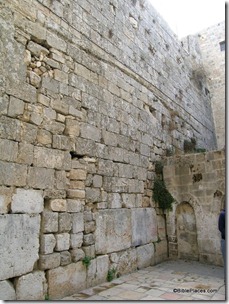Israel Finkelstein has written a brief article explaining why he believes conclusions based on the lack of archaeological evidence trumps the biblical text every time. “Archaeology as a High Court in Ancient Israelite History: A Reply to Nadav Na’aman” (pdf) is published in the Journal of Hebrew Scriptures.
James Tabor has posted an update on the Mount Zion excavation project, including news that the 2011 dig season will be conducted at Suba (“Cave of John the Baptist”) instead of on Mount Zion.
Ferrell Jenkins explains why you should check out his extensive collection of links to Biblical Studies resources, especially the Bible Places and Scholarly categories.
Aren Maeir has posted the schedule for the Aharoni Symposium, to be held on February 17 at Tel Aviv University.
In response to the recent story about the “Small Kotel,” Leen Ritmeyer observes:
It is ironic to see that Haaretz is worried about a strong reaction from the Waqf (the Muslim religious trust), while the praying Jews are apparently oblivious to the fact that they are touching stones laid by Muslims, which may have been taken from a destroyed Christian church, in order to repair the ancient Jewish Temple Mount walls.


